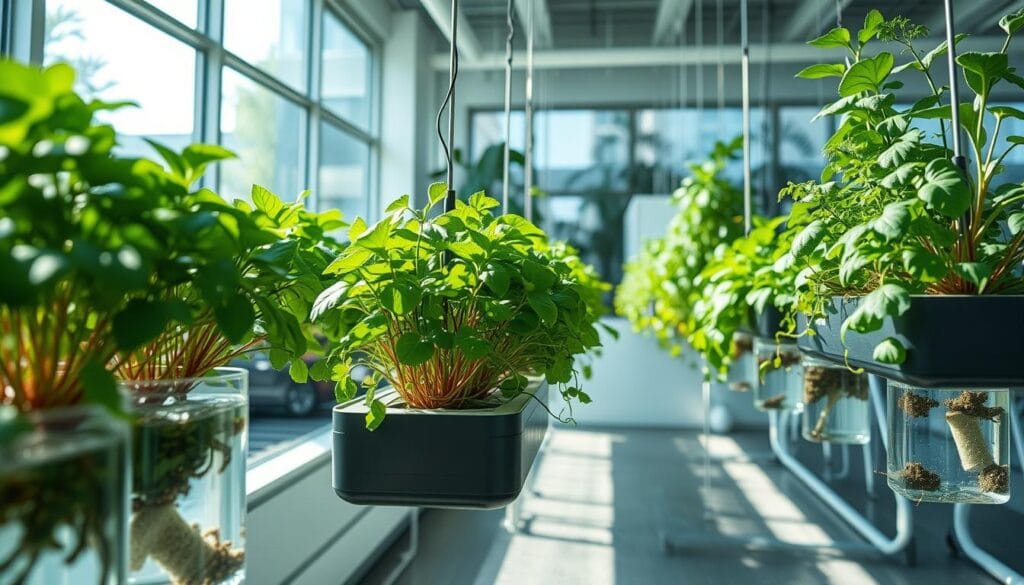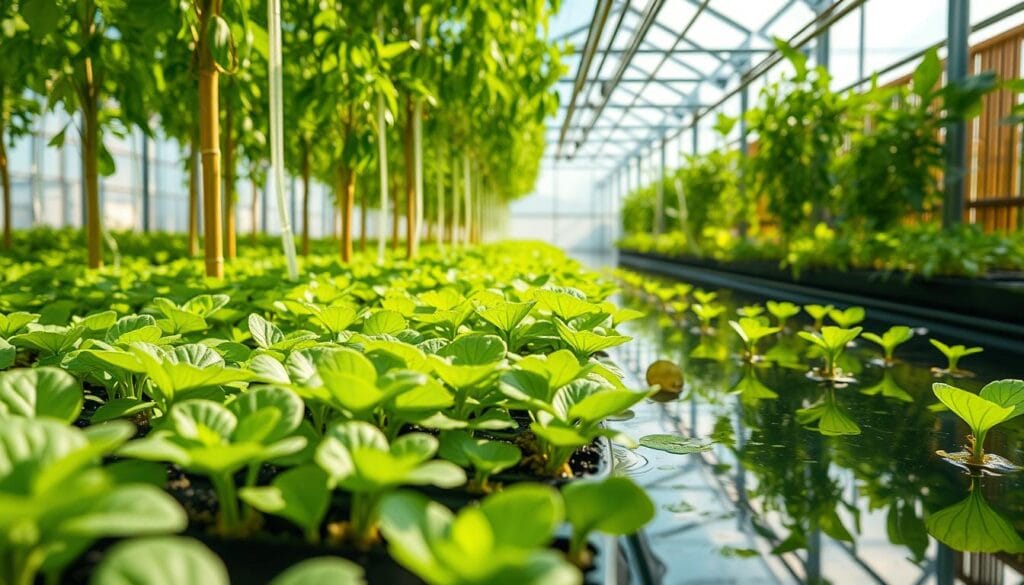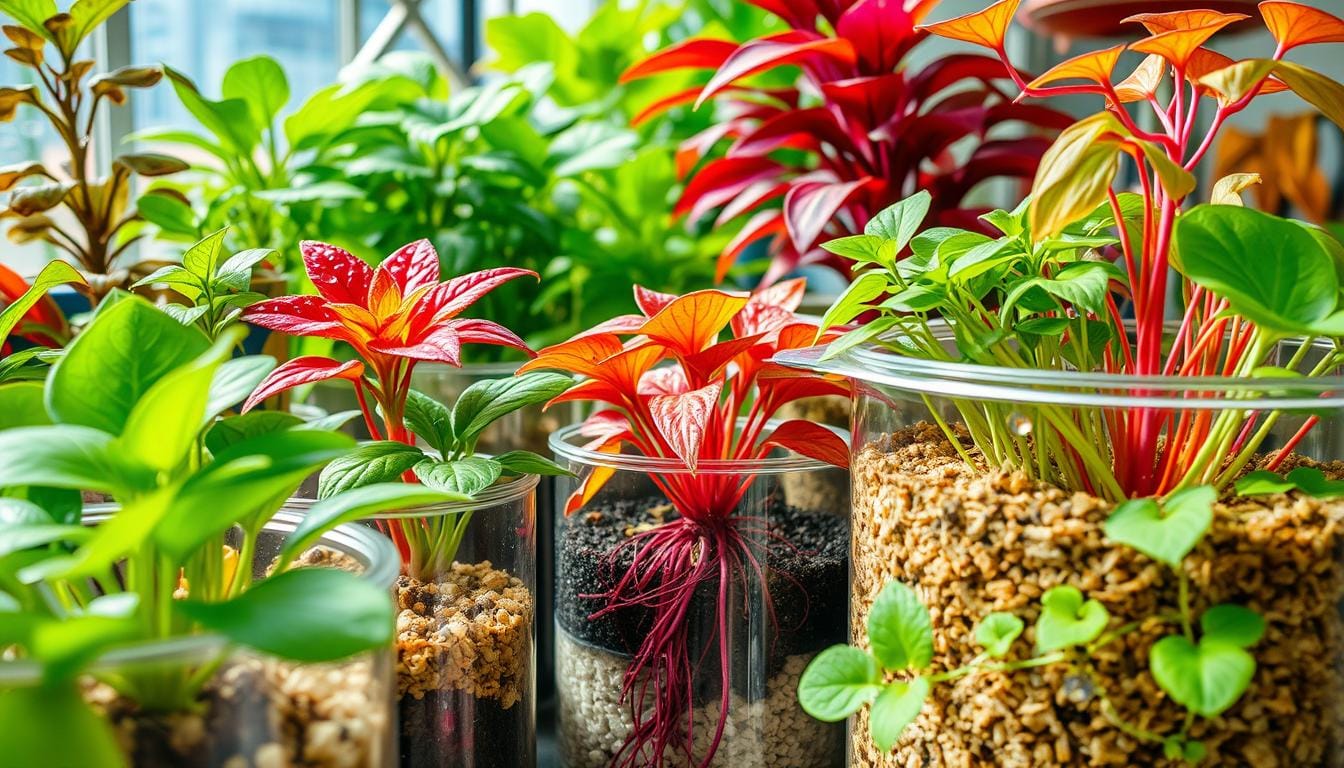Facts about soilless media reveal an innovative farming method that is transforming plant growth. As someone passionate about gardening and exploring new ways to grow plants, I’ve always been fascinated by hydroponics. In this article, I’m excited to share some amazing insights into how soilless media is changing the future of food production.
Key Takeaways
- Soilless media cultivation reduces dependency on land and pesticides, enabling food production in areas with poor soil quality.
- Hydroponics, a soilless cultivation system, offers better control over nutrient levels, more efficient water use, and the ability to grow plants in various environments.
- Soilless farming can lead to higher crop yields in a controlled environment, with reduced contamination risk compared to traditional soil-based farming.
- Nutrients in soilless systems are ensured at the root zone with no leaching, leading to uniform distribution and enhanced water use efficiency.
- Soilless farming requires skilled individuals and costly equipment, but the benefits can outweigh the challenges in many applications.
The Ancient Origins of Soilless Growing Methods
The history of growing plants without soil, or hydroponics, goes back centuries. Ancient civilizations were the first to try new ways of growing plants. They used techniques like the Hanging Gardens of Babylon and the Aztecs’ floating gardens.
The Hanging Gardens of Babylon Legacy
The Hanging Gardens of Babylon, built around 600 B.C., is a key part of hydroponics history. This wonder of the ancient world had gardens hanging high in the air. They were watered by a complex system of aqueducts and irrigation.
Aztec Floating Gardens Innovation
Later, the Aztecs created chinampas, floating gardens in Mexico’s lakebeds. These gardens were made to grow crops like maize and squash. They were built on small islands that could be moved.
Marco Polo’s Chinese Discoveries
In the 13th century, Marco Polo wrote about growing plants in water in China. He described how plants were grown in water troughs, without soil. This showed the effectiveness of soilless cultivation.
These early ideas in ancient soilless cultivation helped start the modern hydroponics industry. They showed how important growing plants without soil has been in history.
Facts About Soilless Media: From Past to Present
The journey of soilless agriculture has been incredible. It moved from ancient ways to modern, science-backed methods. This change came from issues like drought, unpredictable weather, and dirty water. These problems led to the creation of new ways to grow plants without soil.
Soilless farming brings many benefits. It means fewer pests and diseases, and better control over plant roots. It has grown from simple floating gardens to advanced hydroponic systems. These systems are used in big farms and even in space.
The controlled-environment agriculture (CEA) market is growing fast. Companies making soilless growing media are working hard to make sure their products are safe and high quality. They are also making farming more efficient. Rules and standards in the CEA market are helping grow media evolve.
“oilless farming enables higher crop density per square meter, particularly when using movable carrier systems such as the Nutrient Film Technique (NFT).”
Hydroponics is a key part of soilless farming. It delivers nutrients and water to plants in a smart way. This results in improved growth and increased food production. The Nutrient Film Technique (NFT) is popular because it’s easy and cheap.
Soilless farming might cost more, but it’s more efficient and needs less work. It lets people grow food anywhere, anytime. The setup of soilless farms allows for exact control over things like nutrients, water, temperature, and oxygen. This has led to big steps forward in soilless agriculture development.
As hydroponics keeps getting better, we can expect even more cool grow media advancements. These will help make food production more sustainable and efficient in the future.
Revolutionary Breakthroughs in Plant Physiology
The field of plant physiology has seen big changes over the years. These changes have helped us develop new ways to grow plants without soil. In the 1600s, Jan Baptist van Helmont started this journey with his famous willow tree experiment.
His work showed that plants can grow well without just soil. This was a big change in how we think about plant growth and what they need to live.
Van Helmont’s Groundbreaking Willow Experiment
Van Helmont placed a willow tree in a container with a measured amount of soil weight. He watched the tree grow over five years, weighing it often. He found that the tree got much bigger, but the soil weight barely changed.
This led Van Helmont to believe that plants get their growth from something invisible. He called this the “vital principle.”
Scientific Foundations of Nutrient Solutions
In the 1800s, scientists built on Van Helmont’s work. They created nutrient solutions that changed how we feed plants. Jean-Baptiste Boussingault was one of these scientists. He figured out what plants really need to grow.
Later, Julius von Sachs and Wilhelm Knop made these solutions even better. They made them fit the needs of different plants. This work is key to hydroponic research and growing plants without soil today.
| Year | Breakthrough | Researcher |
|---|---|---|
| 1600s | Willow Tree Experiment | Jan Baptist van Helmont |
| 1800s | Nutrient Solution Development | Jean-Baptiste Boussingault |
| 1860s | Nutrient Solution Optimization | Julius von Sachs, Wilhelm Knop |
These early studies in plant physiology led to big changes in how we grow plants. They helped create better nutrient solutions and ways to grow plants without soil. These changes have changed agriculture and are helping us grow food in new, sustainable ways.
The Science Behind Modern Soilless Growing
Hydroponic systems and soilless techniques are changing how we grow plants. These methods use precise nutrient delivery and control the environment. In this way, plants receive all the nutrients they need without the need for soil.
Modern soilless growing lets us control light, temperature, humidity, and pH levels. This control means we can grow plants all year round. It also leads to bigger harvests and better use of resources.
Hydroponic and soilless systems use up to 90% less water than traditional farming. They also cut down on soil-borne diseases and pests. This means less need for pesticides, making farming cleaner and more sustainable.
| Benefit | Percentage Improvement |
|---|---|
| Faster plant growth | Up to 30% |
| Water efficiency | Up to 90% |
| Reduced pesticide use | Significant reduction |
The science behind modern soilless growing is a big leap forward. It lets farmers and gardeners grow better food more efficiently and sustainably. By using the latest in hydroponics and soilless techniques, you can make your crops thrive and help feed the world.
Essential Components of Hydroponic Systems
Hydroponic systems are revolutionizing food production methods. They are a green and efficient way to farm, unlike old-school soil farming. At the core of these systems are three key parts: nutrient solutions, growing media, and environmental control systems. Let’s dive into how each part helps hydroponics grow plants well.
Nutrient Solution Composition
The nutrient solution in hydroponics is a mix of important nutrients. It has nitrogen, phosphorus, potassium, calcium, and magnesium as main nutrients. It also has smaller nutrients like iron, manganese, and zinc. These nutrients are made just right for the plants, helping them grow strong and healthy.
Growing Media Types and Properties
Hydroponic growing media, like coir, perlite, vermiculite, and rockwool, replace soil for plants. They keep moisture, nutrients, and air well, helping plants grow. The right media depends on the plant, system, and growing needs.
Environmental Control Systems
Hydroponics need to control the environment closely. Environmental control systems manage temperature, humidity, light, and pH. Timers, fans, exhausts, and LED lights work together to make the best growing space. This ensures plants grow well and produce quality food.
Hydroponics use these key parts to offer a green and efficient farming method. From nutrient-rich solutions to smart environmental control, these systems lead the way to a future of plenty and eco-friendly food.
Sustainable Benefits of Soilless Agriculture
Soilless agriculture, like hydroponics, aeroponics, and aquaponics, is becoming more popular. It’s a green alternative to traditional farming. These systems use less water and resources, reducing the environmental impact of growing food.
One big plus of soilless farming is its water efficiency. Hydroponics, for example, can save up to 90% of water compared to traditional farming. This is great for areas with little water, as sustainable hydroponics offers a reliable food source.
Soilless farming also cuts down on pesticides and herbicides. This means less harm to the environment and better resource conservation. These systems also reduce crop loss from pests and diseases, making them more sustainable.
| Benefit | Percentage Improvement |
|---|---|
| Water Efficiency | Up to 90% reduction in water usage |
| Pesticide and Herbicide Elimination | 100% reduction in chemical inputs |
| Crop Yield per Unit Area | Up to 10 times higher than traditional farming |
Soilless agriculture is also very space-efficient, especially in cities where land is limited. Vertical farming, a type of sustainable hydroponics, grows crops in stacked systems. This way, more food can be produced in small areas.
While soilless farming might need more energy for climate control and lights, its benefits are still significant. With ongoing tech improvements, soilless agriculture will become even more sustainable. It’s a promising option for the future of food production.

Advanced Nutrient Delivery Methods
In hydroponics, new ways to deliver nutrients are key for better plant growth. The Nutrient Film Technique (NFT) and drip irrigation systems are widely used. They work well with ebb and flow (flood and drain) technology too.
Nutrient Film Technique (NFT)
The Nutrient Film Technique (NFT) uses a thin layer of nutrient-rich solution flowing over plant roots. It keeps plants well-nourished, oxygenated, and watered. This method stops the solution from getting stuck and helps roots absorb nutrients better.
Drip Systems and Ebb Flow Technology
Drip irrigation systems give plants the right amount of nutrients and water. It’s a precise way to feed plants, cutting down on waste. Ebb and flow technology also plays a part, flooding the tray with solution for plants to soak up before draining it.
These methods help balance water, air, and nutrients. This leads to better yields, quality crops, and saves resources. By using the latest in hydroponics, growers can make their plants thrive.
| Nutrient Delivery Method | Key Features | Benefits |
|---|---|---|
| Nutrient Film Technique (NFT) |
|
|
| Drip Irrigation Systems |
|
|
| Ebb and Flow (Flood and Drain) |
|
|
Using these advanced methods, growers can make their hydroponic systems work their best. This leads to healthy, high-yielding plants.
Environmental Impact and Resource Efficiency
Hydroponic systems are a big win for the environment. They consume up to 90% less water compared to traditional farming methods. This makes them a key player in saving water.
They also cut down on the use of harmful chemicals. This protects our natural world from pollution. It’s a significant move towards a more sustainable and cleaner planet.
Hydroponics let us grow food all year round. This boosts food security and cuts down on emissions from transport. It’s an efficient way to optimize energy use.
These systems also help keep the soil healthy. They prevent erosion and save nutrients. This keeps the Earth’s resources in balance.
Hydroponics use new tech and science to save water and energy. They show us a way to farm that’s better for our planet.
| Benefit | Impact |
|---|---|
| Water Conservation | Up to 90% less water usage compared to traditional agriculture |
| Reduced Chemical Dependency | Minimized need for pesticides and herbicides, protecting natural ecosystems |
| Year-Round Production | Increased food security and reduced transportation emissions |
| Renewable Energy Integration | Harnessing sustainable power sources for enhanced energy efficiency |
| Soil Conservation | Mitigating erosion and nutrient depletion, preserving natural resources |
Hydroponics offer a bright future for farming. They help us grow food sustainably. This way, we can feed the world without harming our planet.

Commercial Applications and Future Potential
Soilless agriculture is growing fast, changing how we grow and eat food. It’s moving from vertical farming in cities to hydroponics in restaurants and community centers. These new ways of growing are very promising.
Vertical farming is a big deal now. It stacks growing trays high to use space well and grow lots of food. This is great for cities where it’s hard to find fresh, local food.
Commercial hydroponics is also becoming popular. It’s being used in places like restaurants and hospitals to grow fresh food. This is changing how we think about growing and getting food.
The future of soilless farming looks even brighter. Urban agriculture will help make smart cities better with new tech. It’s also being looked at for growing food in space. This could help us eat well even when we’re not on Earth.
As the world faces more people, less land, and environmental issues, soilless farming is a bright spot. It includes hydroponics, vertical farming, and smart tech. These ideas could make our food system better for the future.
| Soilless Farming Technique | Key Advantages | Emerging Applications |
|---|---|---|
| Vertical Farming |
|
|
| Commercial Hydroponics |
|
|
| Urban Agriculture |
|
|
The future of soilless farming is very promising. It could make our food system better and more sustainable. As more people use hydroponics, vertical farming, and urban agriculture, we’ll see big changes in how we grow and eat food.
Modern Innovations in Soilless Media Technology
The world of soilless agriculture is changing fast. New technologies are making growing crops more efficient. Artificial intelligence (AI) is a key driver of this transformation, helping to optimize processes and improve efficiency.
AI helps with nutrient delivery, predicts crop yields, and spots diseases early. This lets growers work smarter and more efficiently.
Artificial Intelligence Integration
AI is changing how we grow crops. It uses data from sensors to adjust nutrients, light, and environment. This creates the best conditions for each crop.
This precision boosts yields and cuts down waste. It makes soilless farming more sustainable than ever.
Smart Monitoring Systems
AI works with smart monitoring systems to keep crops healthy. These systems track temperature, humidity, pH, and nutrients. They help growers make quick decisions and fix problems quickly.
These systems let growers focus on important tasks. They enhance crop growth by making the process more efficient and effective.

